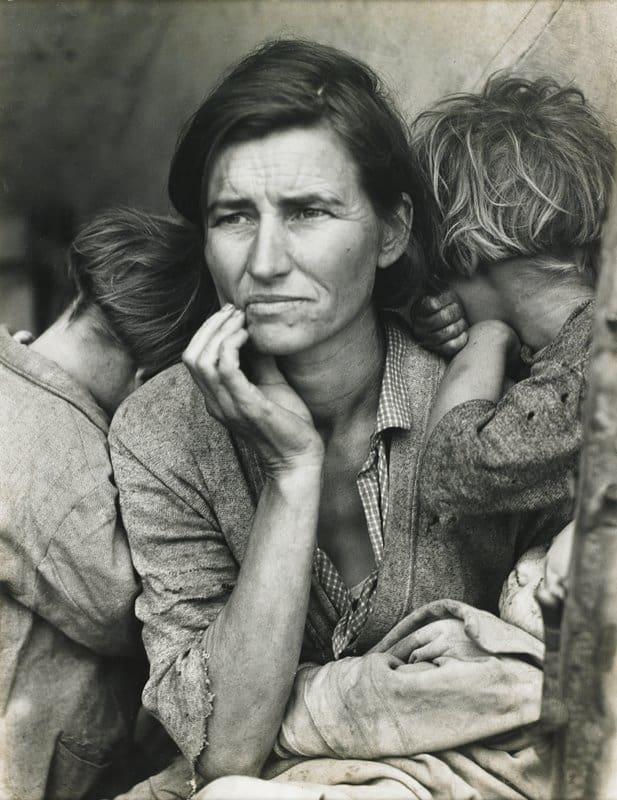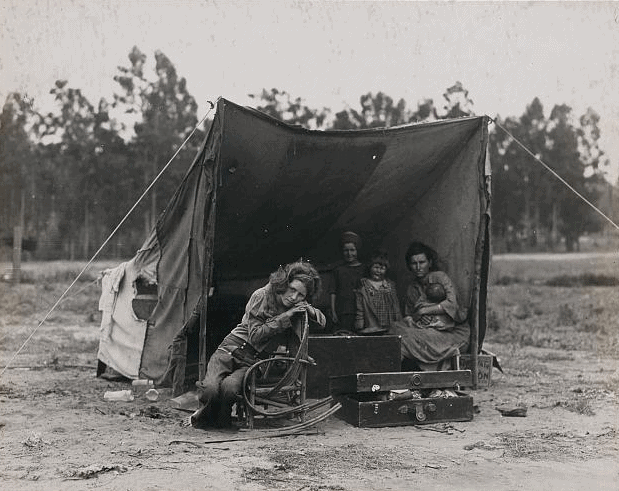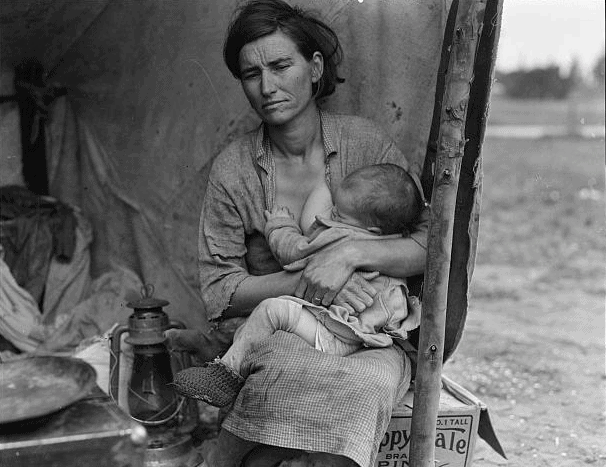The definition of value in photography is critical because of its ambiguity. On the one hand, a value can be explained as a light range that creates the required contrast. On the other hand, values are introduced as principles that underline the importance of the author’s message. The collection “Migrant Mother” by Dorothea Lange is a unique example of how using black-and-white colors reproduces one of the most crucial values of maternity in migrant families. At the end of the 1930s, the photographer met Florence Thompson, an American Indian migrant, and took her pictures that became a symbol of the Great Depression in the United States. However, instead of focusing on the historical facts and conditions under which the images were created, this essay aims at describing the “text” that should be read through the chosen visuals. Lange’s collection is characterized by a strong family value of maternity that can be challenged by certain external factors and provoke various human emotions but will never be neglected or misunderstood in modern culture.

Although the visuals introduce the same family within the same environment, their texts can be described differently. In the first image (fig.1), attention is paid to the face of a migrant mother while the children’s faces are hidden. Even in the preferred black-and-white colors, it is possible to discover a variety of interesting aspects. The mother does not look directly at the camera but has much to tell. Her children lean on her shoulders, proving the despair and incomprehension of the situation. In the second image (fig.2), a whole family is represented, with most members under the tent and one girl outside, sitting on a wooden rocking chair. All of them, except the youngest baby, look directly at the camera as if they want to share something but are unsure if they have to do it.

The last image (fig.3) pictures the mother feeding her child. She is not shy about the necessity of breastfeeding as it is the only reliable source of food the mother can offer. Her eyes are half-open as if she is tired of everything around her but has nothing to do but fulfill her obligation.

The value of motherhood is common for the collection of images under consideration. The Great Depression was a terrible period in American history, and it had multiple devastating effects and damaged human lives regardless of people’s age, gender, or ethnicity (Wolfe). However, despite the chosen angles, the role of a mother remains significant. The first picture serves the purpose of defining the mother as the child’s support and reliance. Compared to the dark background and the dust on her children’s skin, the mother’s face is bright and explicit. She has to look forward and ensure that her children are safe. The second image conforms to the conditions under which most migrants have to live during the Great Depression. The tent in the middle of the field is the only accommodation the mother may afford. Still, she gets a chance to protect her family and uses it the way she can. The third image aims at fashioning the value of maternity and the worth of natural processes that should not be ignored. Breastfeeding is a gift for a mother who wants to raise a child even under devastating conditions.
Looking at the offered collection of visuals, I cannot ignore some labels that might replace a thousand words and definitions. The Great Depression promoted so-called labels such as poverty, migration, homelessness, and unemployment (Wolfe). Maternity is probably the strongest value despite imposed challenges and humanitarian problems. Such things in the pictures as a half-open tent, a small suitcase, a forest in the background, and even the children’s location become significant labels of the Great Depression and family values. The mother never leaves her children and serves as the only permanent figure. She holds her baby because there is no other safe place; their suitcase is open due to the inconstancy of the situation. The forest behind the tent symbolizes the emptiness and darkness of migrant lives. However, the children are under the supervision and protection of their mother.
My response to the collection has changed over time because of the possibility of analyzing the context and visual details. When I saw those images several years ago, I admired their quality and the black-and-white contrast. Adding text to such images is a hard assignment because it is necessary to combine emotions, facts, and diverse perspectives. The text conveys order, discipline, and poise in the event. There is no rush and imbalance in migrant life, and the mother’s constancy is the best evidence of how to behave in desperate situations. With time, I was able to see not only several people living in a tent in a forest but recognize strong family ties and the role of a mother. Maternity can never disappear but becomes strengthened under the pressure of external factors.
The context of the text contains the necessary information that helps highlight the meaning and worth of the offered images. In the collection, visuals neither present the impact of the Great Depression nor explain why the family lives in such an unstable environment. The text’s context plays an important role because it makes it possible to understand the expressions on the mother’s face, the lack of smiles on the children’s faces, and the absence of childhood in migrant families.
It is hard for me to control my emotions while looking at the chosen pictures. However, evaluating emotions presented in the visuals and the offered text is even more difficult. The value of maternity and the worth of family relations are usually underestimated by modern society. People have a tendency to accept their opportunities and living conditions as something granted. Most families have homes, parents have jobs, and children have their light-hearted childhood. Thus, it is easy to forget that many individuals continue suffering because of the necessity to leave their houses and migrate to new countries. The feelings of hopelessness, despair, and emptiness overfill human souls and remain in the context of the visuals’ text.
In conclusion, the assignment to read the collection of visuals is not just another academic obligation or challenge. It is a great opportunity to look closer at well-known images and recognize their contexts, messages, and worth for modern communities. Lange’s photos underline the value of maternity and family connection. Although this collection goes back to the middle of the 1900s, it contributes to a better understanding of current problems and social concerns. Today, many people expect help and support from multiple sources. “Migrant Mother” is a reminder that no one but a mother can protect a child selflessly and without any expectation in return, and this value is seen even in the black-and-white colors.
Work Cited
Wolfe, Shira. “Stories of Iconic Artworks: Dorothea Lange’s Migrant Mother.” Artland Magazine, Web.